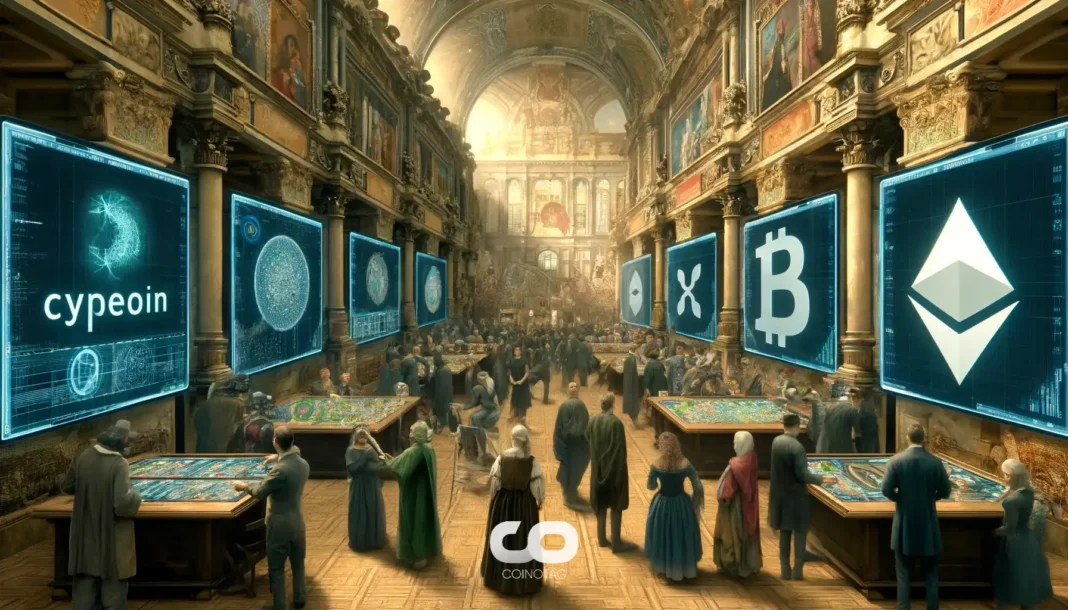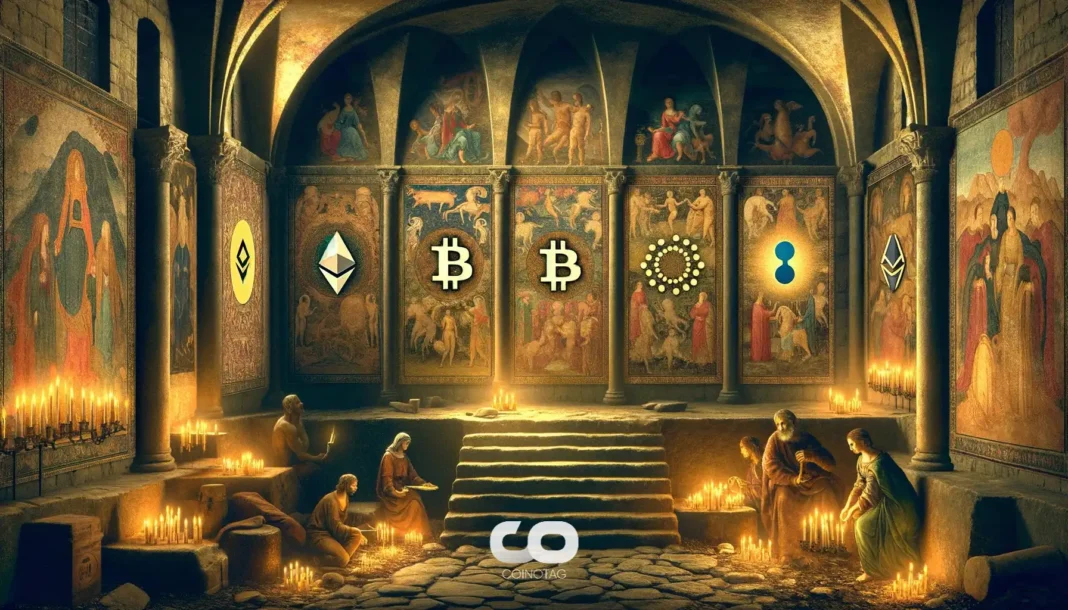| COINOTAG recommends • Exchange signup |
| 💹 Trade with pro tools |
| Fast execution, robust charts, clean risk controls. |
| 👉 Open account → |
| COINOTAG recommends • Exchange signup |
| 🚀 Smooth orders, clear control |
| Advanced order types and market depth in one view. |
| 👉 Create account → |
| COINOTAG recommends • Exchange signup |
| 📈 Clarity in volatile markets |
| Plan entries & exits, manage positions with discipline. |
| 👉 Sign up → |
| COINOTAG recommends • Exchange signup |
| ⚡ Speed, depth, reliability |
| Execute confidently when timing matters. |
| 👉 Open account → |
| COINOTAG recommends • Exchange signup |
| 🧭 A focused workflow for traders |
| Alerts, watchlists, and a repeatable process. |
| 👉 Get started → |
| COINOTAG recommends • Exchange signup |
| ✅ Data‑driven decisions |
| Focus on process—not noise. |
| 👉 Sign up → |
-
Coinbase’s layer-2 blockchain, Base, experienced a notable spike in transactions amid a recent token launch on the innovative Virtuals AI platform.
-
This surge propelled Base towards impressive transaction rates, drawing comparisons with Solana, a leading layer-1 blockchain, and demonstrating the evolving dynamics in the crypto landscape.
-
“We achieved close to 1,000 TPS during the launch, showcasing Base’s potential in handling high-demand scenarios,” stated Base creator Jesse Pollak.
This article explores the recent performance surge of Coinbase’s Base blockchain during a token launch, comparing it to Solana, and providing insights into DeFi trends.
Base’s Performance Surge: A Momentary Spotlight in Blockchain Transactions
The recent launch of a token on the Virtuals AI platform highlighted Base’s capability to manage a high volume of transactions, briefly pushing its throughput to nearly 1,000 transactions per second (TPS). This momentary achievement brings Base closer to competing with more established blockchain networks like Solana, which currently sustains around 1,039 TPS.
According to sources, Base reached a peak of 959 TPS on May 29, underscoring its theoretical maximum of 1,429 TPS as reported by Chainspect. However, while spikes in activity can occur—driven by external events such as token launches or trading frenzies—the network generally operates at a modest real-time TPS of around 156.
A Closer Look at Transaction Patterns: Key Insights
The apparent spike in activity on Base is significant given its fluctuating TPS and market dynamics. As Jesse Pollak noted, “The volatility in TPS often reflects the underlying activity, especially when partnered with other platforms.” This is illustrated by the virtual launch event, which resulted in Base generating over $60,000 in fees, dwarfing Solana’s earnings of just $4,000 during the same period as reported by DeFillama.
| COINOTAG recommends • Professional traders group |
| 💎 Join a professional trading community |
| Work with senior traders, research‑backed setups, and risk‑first frameworks. |
| 👉 Join the group → |
| COINOTAG recommends • Professional traders group |
| 📊 Transparent performance, real process |
| Spot strategies with documented months of triple‑digit runs during strong trends; futures plans use defined R:R and sizing. |
| 👉 Get access → |
| COINOTAG recommends • Professional traders group |
| 🧭 Research → Plan → Execute |
| Daily levels, watchlists, and post‑trade reviews to build consistency. |
| 👉 Join now → |
| COINOTAG recommends • Professional traders group |
| 🛡️ Risk comes first |
| Sizing methods, invalidation rules, and R‑multiples baked into every plan. |
| 👉 Start today → |
| COINOTAG recommends • Professional traders group |
| 🧠 Learn the “why” behind each trade |
| Live breakdowns, playbooks, and framework‑first education. |
| 👉 Join the group → |
| COINOTAG recommends • Professional traders group |
| 🚀 Insider • APEX • INNER CIRCLE |
| Choose the depth you need—tools, coaching, and member rooms. |
| 👉 Explore tiers → |
Despite the temporary performance uplift, the average transaction fee on Base remained around 4 cents, offering a competitive edge compared to other networks. This performance illustrates Base’s potential for providing scalable solutions amidst growing user demands.
DeFi Landscape: Base Versus Solana
Examining the decentralized finance (DeFi) sector, Base and Solana have emerged as key players, predominantly receiving network revenue from memecoin transactions. As of now, Base boasts a total value locked (TVL) of $3.75 billion, edging close to its all-time high figures, according to DefiLlama. In contrast, Solana holds $9 billion in TVL, reflecting an 18% drop from its January peak.
| COINOTAG recommends • Exchange signup |
| 📈 Clear interface, precise orders |
| Sharp entries & exits with actionable alerts. |
| 👉 Create free account → |
| COINOTAG recommends • Exchange signup |
| 🧠 Smarter tools. Better decisions. |
| Depth analytics and risk features in one view. |
| 👉 Sign up → |
| COINOTAG recommends • Exchange signup |
| 🎯 Take control of entries & exits |
| Set alerts, define stops, execute consistently. |
| 👉 Open account → |
| COINOTAG recommends • Exchange signup |
| 🛠️ From idea to execution |
| Turn setups into plans with practical order types. |
| 👉 Join now → |
| COINOTAG recommends • Exchange signup |
| 📋 Trade your plan |
| Watchlists and routing that support focus. |
| 👉 Get started → |
| COINOTAG recommends • Exchange signup |
| 📊 Precision without the noise |
| Data‑first workflows for active traders. |
| 👉 Sign up → |
This ongoing competition situates Base favorably within the Ethereum ecosystem, which still dominates DeFi with nearly $63 billion in locked assets. Yet, the paradox of Ethereum lies in its higher transaction fees and lower throughput compared to innovative solutions like Base and Solana.
Future Outlook: The Road Ahead for Layer-2 Solutions
The performance of Base during the recent token launch introduces intriguing possibilities for layer-2 solutions, particularly in addressing scalability issues encountered by more established cryptocurrencies. Continued enhancements in transaction speeds and reduced fees could position Base as a formidable contender in the blockchain marketplace.
| COINOTAG recommends • Traders club |
| ⚡ Futures with discipline |
| Defined R:R, pre‑set invalidation, execution checklists. |
| 👉 Join the club → |
| COINOTAG recommends • Traders club |
| 🎯 Spot strategies that compound |
| Momentum & accumulation frameworks managed with clear risk. |
| 👉 Get access → |
| COINOTAG recommends • Traders club |
| 🏛️ APEX tier for serious traders |
| Deep dives, analyst Q&A, and accountability sprints. |
| 👉 Explore APEX → |
| COINOTAG recommends • Traders club |
| 📈 Real‑time market structure |
| Key levels, liquidity zones, and actionable context. |
| 👉 Join now → |
| COINOTAG recommends • Traders club |
| 🔔 Smart alerts, not noise |
| Context‑rich notifications tied to plans and risk—never hype. |
| 👉 Get access → |
| COINOTAG recommends • Traders club |
| 🤝 Peer review & coaching |
| Hands‑on feedback that sharpens execution and risk control. |
| 👉 Join the club → |
Conclusion
In conclusion, the surge in transactions for Base amidst the Virtuals platform’s token launch showcases the evolving capabilities within the blockchain space. With advancements in scalability and transaction efficiency, Base is poised to compete head-to-head with established networks like Solana. As layer-2 solutions continue to adapt and grow, stakeholders will be keenly observing how these developments influence the broader DeFi landscape.
| COINOTAG recommends • Members‑only research |
| 📌 Curated setups, clearly explained |
| Entry, invalidation, targets, and R:R defined before execution. |
| 👉 Get access → |
| COINOTAG recommends • Members‑only research |
| 🧠 Data‑led decision making |
| Technical + flow + context synthesized into actionable plans. |
| 👉 Join now → |
| COINOTAG recommends • Members‑only research |
| 🧱 Consistency over hype |
| Repeatable rules, realistic expectations, and a calmer mindset. |
| 👉 Get access → |
| COINOTAG recommends • Members‑only research |
| 🕒 Patience is an edge |
| Wait for confirmation and manage risk with checklists. |
| 👉 Join now → |
| COINOTAG recommends • Members‑only research |
| 💼 Professional mentorship |
| Guidance from seasoned traders and structured feedback loops. |
| 👉 Get access → |
| COINOTAG recommends • Members‑only research |
| 🧮 Track • Review • Improve |
| Documented PnL tracking and post‑mortems to accelerate learning. |
| 👉 Join now → |







